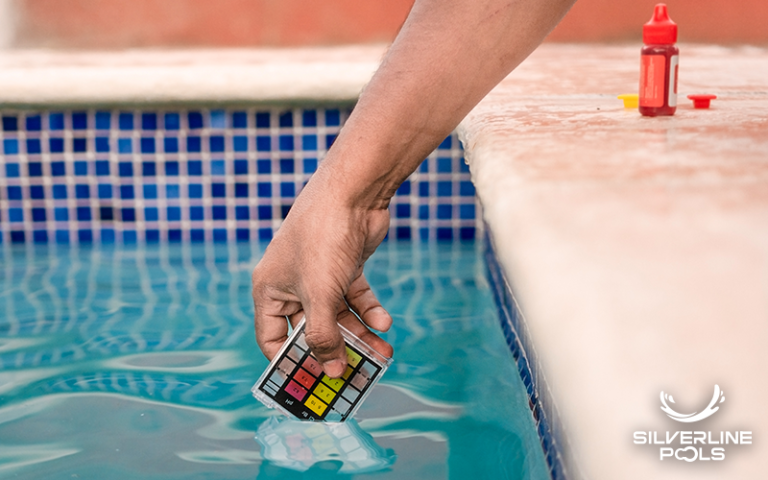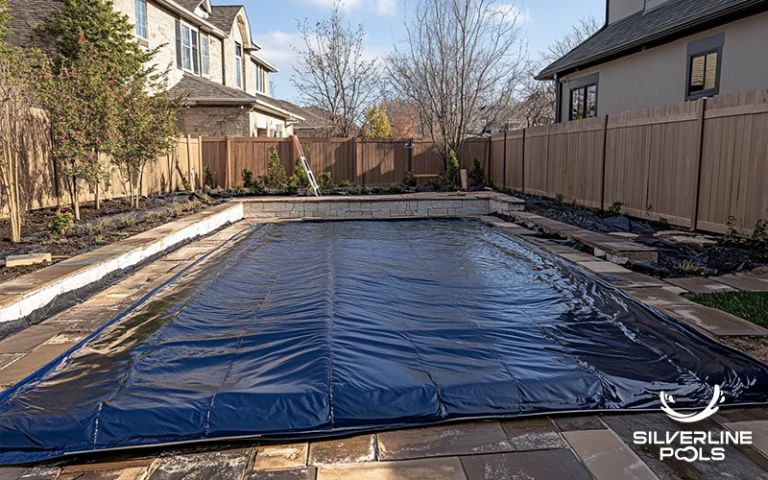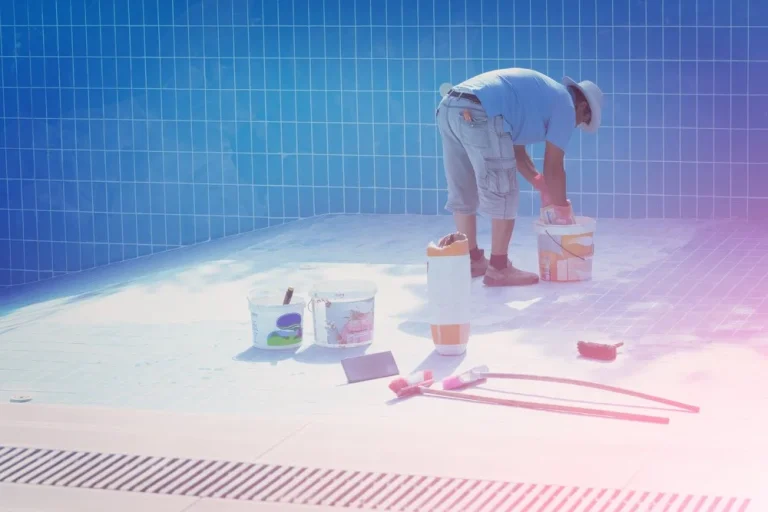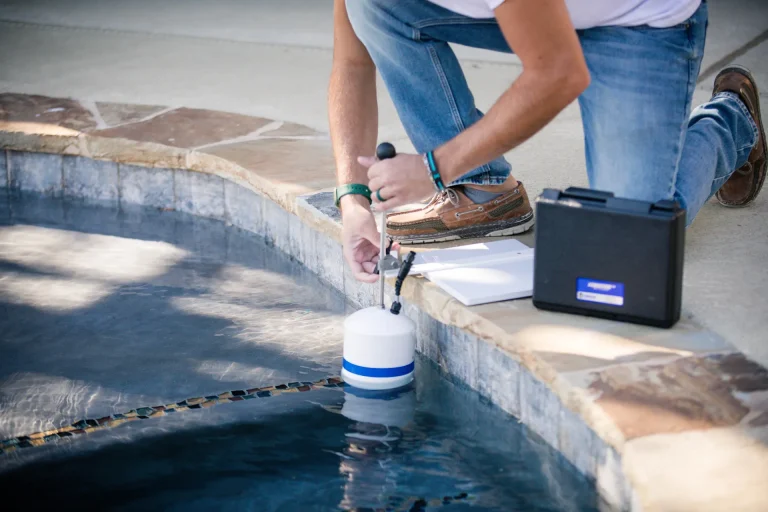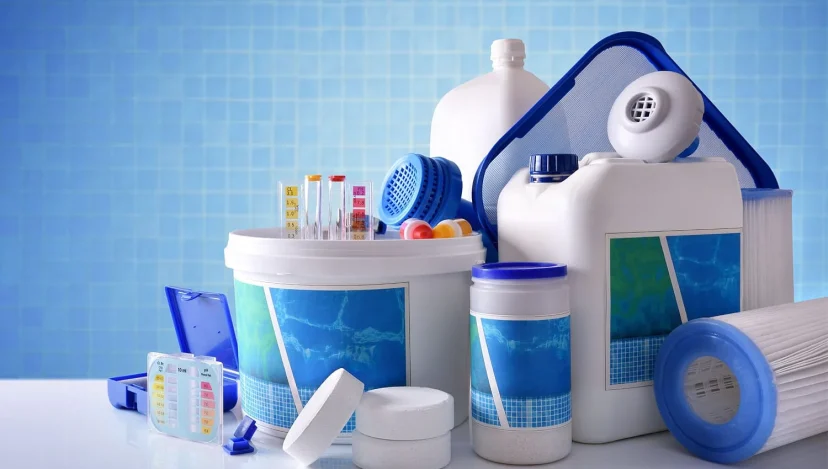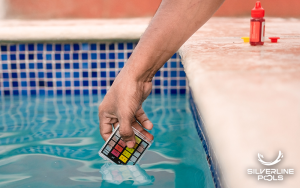Relaxing in a steaming hot tub after a long day sounds like bliss. However, it’s the chemicals such as sanitizers, pH and alkalinity adjusters, and shock treatments that keep the hot tub water clean and inviting for bathing.
Hot tubs require specific chemical levels to maintain healthy and clear water.
This blog explores everything you need to know about chemicals for hot tubs. It explains the necessary and optional hot tub chemicals, solving common chemical problems, and the hot tub chemical chart.
Let’s find out more!
Why Do Hot Tub Chemicals Matter?
Hot tub maintenance chemicals are synonymous with hot tub ownership. Whenever there is a hot tub, there will be chemicals needed to keep its water healthy and equipment in top function. Due to frequent usage, body oils, creams, soaps, etc., hot tub water becomes foamy, cloudy, or unhealthy for soaking. After some time, an unclean hot tub can be a habitat for germs, algae, or bacteria that can risk the health of the bathers. Hot tub chemicals also affect the lifespan of the equipment. Properly balanced chemicals can guarantee a prolonged life for the equipment.Safety Precautions While Handling Hot Tub Chemicals
Follow the below safety precautions for safe and effective storage and use of hot tub chemicals.- Read and follow the given instructions on the chemicals packaging.
- Wear protective gloves and goggles when handling hot tub chemicals.
- Store hot tub chemicals in a cool, dry place.
- Do not place the chemicals under direct exposure to sunlight.
- Store chemicals safely away from children and pets.
- Do not ever mix two chemicals.
- Wash your hands after using or handling the hot tub chemicals.
In what order do you add hot tub chemicals?
Here’s the hot tub chemicals addition order for optimal effectiveness and to avoid unwanted chemical reactions.- Scale Remover (Optional)
- pH Balancer
- pH Adjuster
- Sanitizer
- Calcium Hardness Adjuster
- Shock Treatment
Hot Tub Chemical Chart
Here is a general chart that shows the ideal hot tub chemical levels.| Chemical | Ideal Level |
| Free Chlorine | 1.5 – 3.0 ppm |
| Bromine | 3.0 – 5.0 ppm |
| pH | 7.2 – 7.8 |
| Alkalinity | 80 – 120 ppm |
| Shock (oxidiser) | Follow package directions |
| Calcium Hardness | 120 – 150 ppm |
What are the essential hot tub chemicals?
Following are the must-have chemicals for a hot tub.1. Sanitizers
Sanitizers are chemicals that eliminate harmful bacteria, algae, and other contaminants from the water. They keep your hot tub safe for soaking and prevent bacterial or algal growth. Some of the popular sanitizers are:Chlorine
Chlorine is the most popular sanitizer for hot tubs and pools. It is more effective at killing bacteria than other sanitizers. However, chlorine requires more frequent treatment and leaves a stronger smell than other sanitation chemicals.Bromine
Bromine is a strong alternative to chlorinated chemicals. The good thing about bromine is that it is soft on the skin, has no bad smells, and lasts longer than chlorine. However, bromine is a comparatively expensive option and becomes less effective when exposed to UV rays of the sun. Also read, “Chlorine vs Bromine – Which is the Right Pool Sanitizer?”Minerals
Minerals, though less effective, can be used as hot tub sanitizers. They keep bacteria and algae at bay. The most popular minerals are silver (antibacterial) and copper (disrupts algae growth).2. pH Balancers
Maintaining the optimal level of hot tub pH is crucial for the overall chemical balance. Any disturbance in the pH levels can disrupt the chemical composition of the hot tub water. To change the pH level, you will need a pH increaser or a pH decreaser.pH Increaser
Low pH can irritate the swimmers’ skin and eyes. To deal with low pH level, use a pH increaser. Sodium Carbonate or soda ash is a commonly used hot tub pH increaser.pH Decreaser
Similarly, high pH levels decrease the sanitizer’s effectiveness. Sodium bisulfate or muriatic acid is an effective chemical for lowering pH levels.3. Total Alkalinity Balancers
A balanced hot tub alkalinity helps balance the pH levels. Alkalinity acts as a buffer that resists any drastic fluctuation in the pH level. Here is how to raise or lower your hot tub water alkalinity.Raising Alkalinity
Sodium Bicarbonate is the most common and readily available option. It is safe and easy to handle. However, it’s important to note that adding too much baking soda can raise alkalinity excessively.Lowering Alkalinity
Sodium Bisulfate and Muriatic Acid are popular options for lowering alkalinity. However, it’s important to follow all safety precautions and handle the process with extreme care.3. Shock Treatments
Just like pool shock treatment, hot tubs also require a routine shock. It raises the free chlorine levels in the water. The free chlorine or other sanitizers’ level kills bacteria and other microbes. Here are the common shock treatments for your hot tub.Chlorine Shock
It is the most effective and popular shock treatment to sanitize your hot tub. Chlorine shock typically uses sodium dichlor, a stabilized form of chlorine.Bromine Shock
After chlorine, bromine shock treatment is widely used. Bromine is a milder oxidizer compared to chlorine.Non-Chlorine Shock
Non-chlorine shocks are the alternatives to chlorine or bromine shock treatments. It is a powerful treatment used in traditional and inflatable hot tubs. It eliminates contaminants and helps maintain clean water.4. Filter Cleaner
Different chemicals are available in the market to clean your hot tub filter. They can be found in granular, concentrated liquid, or soaking solution. Chemicals such as cartridge cleaner, filter soak cleaner, and trisodium phosphate (TSP) can be used for filter cleaning. Some natural alternatives for hot tub filter cleaning include white vinegar, baking soda, and lemon juice.What are other optional hot tub chemicals?
There are some other hot tub chemicals to consider though they are not mandatory. These chemicals are used to treat specific hot tub conditions and optimize functionality.Clarifiers and Removers
Clarifiers help make your hot tub sparkle by clearing cloudy water. They work by clumping together tiny particles too small to be trapped by the filter. On the other hand, hot tub removers are used to remove specific contaminants from hot tub water, such as scale, metals, and biofilms.Metal Sequestrant
Metal sequestrants lock hot tub water metals such as iron and copper. This lock-up prevents these metals from reacting with the sanitizers (chlorine or bromine), avoiding stains on the spa surfaces and equipment.Line Flush Cleaner
Over time, gunk can build up in your hot tub’s pipes, slowing the water flow. Line flush cleaners can dissolve these contaminants and clear the pipes.Calcium Hardness Adjuster
A balanced calcium hardness level is also necessary for a hot tub. The decline in the calcium hardness level will affect your hot tub pipeline and shell. Conversely, if it exceeds the optimal level, it can cause hot tub scale buildup or clogged filters. For this reason, a calcium hardness adjuster should be used to keep it at the ideal level.Solving Common Chemical Issues in Hot Tubs
The table below shows typical inflatable hot tub chemical maintenance problems, their causes, and how to treat them.| Problem | Caused By | Solution |
| Cloudy Water | High pH and alkalinity, and lack of water sanitizer. |
|
| Algae Growth |
|
|
| Scaling | High calcium and mineral levels in the water. |
|
| Imbalanced pH |
|
|
| Foaming |
|
|
What are the downsides of hot tub chemical imbalance?
Properly balanced hot tub chemicals are essential for a healthy soak. Here are some of the cons of ill-maintained hot tub chemicals.Less Appealing
Unclear, foggy, foamy water makes your hot tub less attractive.Health Problems
Unhealthy water due to chemical imbalances can cause skin, eye, or ear irritation.Equipment Issues
Imbalanced pH, alkalinity, or calcium levels can damage the hot tub liners, plumbing, or filters.Wrapping Up
Hot tub servicing and cleaning are incomplete without chemicals. Various chemicals are used to keep the water clean and healthy for soaking. When not maintained regularly, hot tub water may turn foamy, which can cause health issues and equipment damage. While handling or using hot tub chemicals, ensure safety precautions and follow the instructions labeled on the chemicals’ pack. For expert and professional hot tub maintenance, contact Silverline Pools and enjoy a gleaming and healthy soak.Frequently Asked Questions
What is the best chemical to put in a hot tub?
Bromine is a good option for hot tub sanitation because it can function well at higher temperatures.
Which is better, shock or liquid chlorine?
Your preference will determine whether shock or liquid chlorine is best. However, liquid chlorine is affordable, pre-dissolved, and non-scaling.
How long should I wait after treating my hot tub with chemicals?
For best results, wait 30-60 minutes after adding chlorine or bromine. Similarly, wait about 24 hours after hot tub shock treatment.


